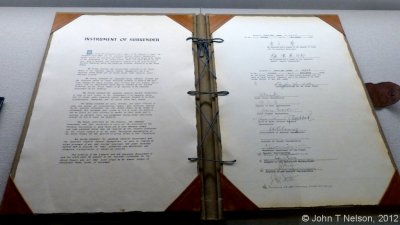It’s raining cats and dogs here in Tokyo, so today John is traveling back in time to the Edo period at the Edo-Tokyo Museum in Ryogoku, Tokyo…
12:30pm JST
Ryogoku is a small section of Tokyo best known for the Kokugikan arena where sumo matches are held each year. The Kokugikan is also the arena where a segment of the James Bond movie “You Only Live Twice” was filmed in 1966. The Edo-Tokyo Museum is right next door and just a stone’s throw from the Tokyo Metro subway’s Oedo line.
While getting tickets I discover that there is a special exhibit, the oil paintings and life of Kiyo Kawamura, who studied Western style art and oil painting in Paris and whose life spanned four eras: the Edo, Meiji, Taisho and Showa periods. His works are striking because they depict, for the most part, entirely Japanese themes but with the painting technique and style of the Flemish and Dutch golden age. It’s really quite striking…
I’m fond of three works in particular:
2:30pm JST
I move on to the main exhibits located on the sixth floor of the museum, the walls surrounding the escalator covered in illustrations of Japanese life and costuming from the Edo through Showa eras. The escalator that leads to the sixth floor is enclosed by a clamshell shroud presumably as a security measure, but also looks cool.
At the entrance of the Edo exhibit we are confronted with a replica of the old Nihonbashi Bridge from the Edo period and a theatre where Kabuki, Rokugan and various other performances are held. There are exhibits on reclaimed land construction, Edo period wood crafts, money and currency, trade, social structure, arts, astronomy, book stores (the publishing industry was huge during the Edo period) and much more. And keep in mind that this was over a 200 year span from the 17th to 19th centuries. The Japanese and Koreans had functional star charts in the 14th century! I can see that this is going to take more than a day to assimilate.
Throughout the museum, highly detailed miniature towns and castles depict the life of the Edo period. I know several friends who would love to play miniature games on these dioramas, including me!
4:30pm JST
To one side of the museum I found a special exhibit on the Tokogawa Shogunate, and on the opposite end of the hall, an extensive exhibit of modern day Tokyo. On the Tokyo side of the hall there are exhibits ranging from 19th century industrialization through the era of deprivation in the mid 20th century. That’s a lot of ground to cover including the growth of Tokyo from reclaimed land building, the Great Kanto Earthquake, Word War II and post-war industrialization.
The World War II exhibit includes film footage and artifacts from the Tokyo fire bombings during WWII, and at the end of this exhibit I can’t believe what I’m looking at, but its apparently real… the original “Instrument of Surrender” that officially ended WWII… right there in front of me. I’ve seen film footage of the signing of this document on board the Missouri and it looks like the original to me. It surprises me that the original is here and not in a vault someplace…
5:20pm JST
The museum closes in ten minutes and I’m convinced that I will have to return at a later date, there’s just too much to take in over the span of half a day! The Edo period was a golden age for Japan, two hundred years of civilization building and prosperity for the Japanese nation, culture and people.
5:45pm JST
We wander towards what looks like Sumo Town and find a Yoshinoya on the corner, where I use up one of my Yoshinoya Y100 coupons on the pork rice bowl and miso soup… yum! Across from the Yoshinoya is the Sumo Store which I recognize from NHK World TV! This is the store where all the sumo wrestlers buy clothes that are sumo-sized!
6:30pm JST
Heading back to the apartment via the Oedo subway line. If the weather holds out tomorrow, we plan to return to Enoshima!





















